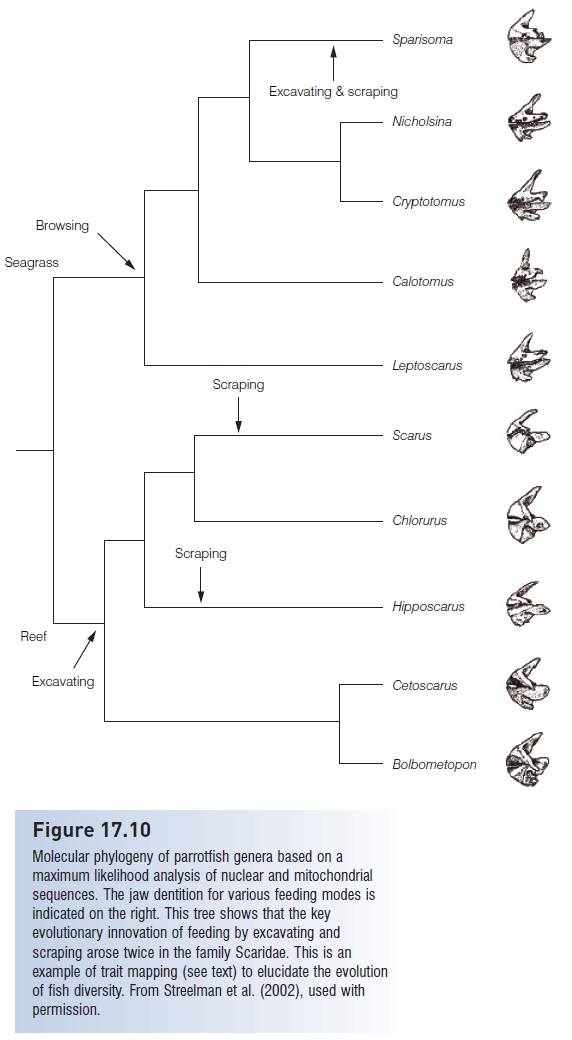Chapter: The Diversity of Fishes: Biology, Evolution, and Ecology: Fish genetics
Mapping an evolutionary innovation in parrotfishes
Mapping an evolutionary innovation in parrotfishes
Parrotfishes (Scaridae) are a group of herbivorous fishes that include browsers on seagrass, excavators on hard substrate, and scraperson coral reefs. Using their beaklike jaws, individuals can consume tons of coral every year, and in undisturbed locations they promote a healthy balance between coral growth and erosion (Bellwood et al. 2003). For this reason they are regarded as ecosystem engineers, essential to ecosystem function.
Several recent studies have attempted to resolve the origin of the unusual “parrot” jaw morphology, in which the teeth are fused to form an efficient tool for removing algae and coral. The oldest known fossil example belongs to one of the seagrass grazers (genusCalotomus), prompting a hypothesis that parrotfish made a gradual transition from the less specialized browsers to the excavators and most recently to the coral scrapers (Bellwood 1994). These evolutionary hypotheses are testable with trait mapping, in

Figure 17.10
Molecular phylogeny of parrotfish genera based on a maximum likelihood analysis of nuclear and mitochondrial sequences. The jaw dentition for various feeding modes is indicated on the right. This tree shows that the key evolutionary innovation of feeding by excavating and scraping arose twice in the family Scaridae. This is an example of trait mapping (see text) to elucidate the evolution
In this case, browsing, excavating, and scraping can be mapped on a molecular phylogeny of Scaridae, to determine whether the oldest branches in the tree include browsers, and whether the youngest branches include scrapers.
Streelman et al. (2002) addressed this question with 2 kb of DNA sequence, including the nuclear intron Tmo-4C4 and three mtDNA segments (cytochrome b, 12S, and 16S genes) in 16 scarid species and two outgroups (Labridae). The resulting phylogeny (Fig. 17.10) shows an ancient separation between the grazers or browsers versus the excavators and scrapers. The grazer lineage has jaw morphology that is little modified from the ancestral condition, with no fused teeth. The notable exception in the grazer lineage is the genus Sparisoma, which contains browsers, excavators, and scrapers. The Sparisoma species that are excavating or scraping have independently evolved the fused teeth and corresponding jaw morphology. Hence the evolutionary innovation of excavation/scraping arose twice in the family Scaridae. The genus Sparisoma is estimated to be 14–35 million years old based on a molecular clock, providing a timeframe for the independent evolution of the excavating/ scraping adaptation (Bernardi et al. 2000).
Related Topics